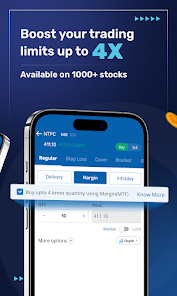Exchange-Traded Funds (ETFs) have gained popularity among investors due to their liquidity, diversification, and ease of trading. However, many traders experience delays when executing ETF transactions through their demat accounts. These delays can be frustrating, particularly for those engaged in the fast-paced online share market.

With the increasing use of trading apps, investors expect quick and seamless execution of their orders. However, several factors contribute to processing lags in ETF trading, including settlement procedures, system limitations, and regulatory requirements. Understanding these reasons can help traders manage their expectations and optimize their trading strategies.
Causes of ETF Trading Delays
1. Settlement Process and Time Lag
ETF trades are subject to a settlement cycle, which affects the speed of transaction completion. In most markets, trades follow a T+1 or T+2 settlement period, meaning the transaction is finalized one or two business days after the trade date. During this period, funds and securities are processed through various intermediaries, which can result in delays.
2. System Congestion and Trading Volume
High trading volume, especially during peak market hours, can cause congestion in brokerage systems. This is particularly relevant for investors using a trading app, as multiple transactions occur simultaneously. Network slowdowns and processing backlogs may impact the speed at which ETF trades are executed and reflected in demat accounts.
3. Broker and Depository Processing Time
Demat accounts are linked to depositories and brokerage firms that process transactions. Depending on the efficiency of these intermediaries, there may be delays in ETF settlements. Some brokers may have manual verification steps or additional security checks that extend the processing time.
4. Liquidity Issues in the ETF Market
Although ETFs are known for their liquidity, certain funds with lower trading volumes can experience delays in order execution. The availability of market makers and authorized participants plays a significant role in ensuring that ETF shares are adequately supplied for purchase or redemption.
5. Regulatory and Compliance Requirements
Financial regulations mandate verification processes before completing trades. These regulatory checks, while essential for security and transparency, can cause slight delays in ETF transactions. Compliance procedures such as margin requirements and risk assessments also contribute to processing time.
How to Minimize ETF Trading Delays
1. Choose a Reliable Trading Platform
Selecting a trading app with a robust infrastructure ensures smoother and faster ETF transactions. A well-optimized platform with strong backend support can reduce order processing time and minimize execution delays in the online share market.
2. Trade During Off-Peak Hours
Executing ETF trades outside peak trading periods may help avoid congestion-related delays. Early morning or late afternoon trades often experience fewer bottlenecks, leading to faster transaction processing.
3. Maintain Sufficient Funds in Your Trading Account
Ensuring that adequate funds are available before placing an order prevents unnecessary delays due to insufficient balance notifications. This is particularly relevant for margin-based trading.
4. Monitor ETF Liquidity Levels
Before executing trades, check the liquidity of the chosen ETF. High-liquidity ETFs typically experience quicker execution times, while low-liquidity funds may take longer to process due to limited market maker participation.
5. Stay Informed About Settlement Policies
Understanding your broker’s settlement policies can help manage expectations regarding ETF trading delays. Reviewing the terms and conditions related to fund transfers, order processing, and demat account linking can provide clarity on potential waiting times.
Conclusion
ETF trading through a demat account is influenced by various factors, including settlement cycles, trading volume, liquidity, and broker efficiency. While delays can sometimes be unavoidable, traders can take proactive measures to minimize disruptions. Choosing a reliable trading app, understanding the online share market dynamics, and managing liquidity expectations can improve the ETF trading experience. By staying informed and optimizing their strategies, investors can navigate these challenges effectively and execute trades with greater confidence.